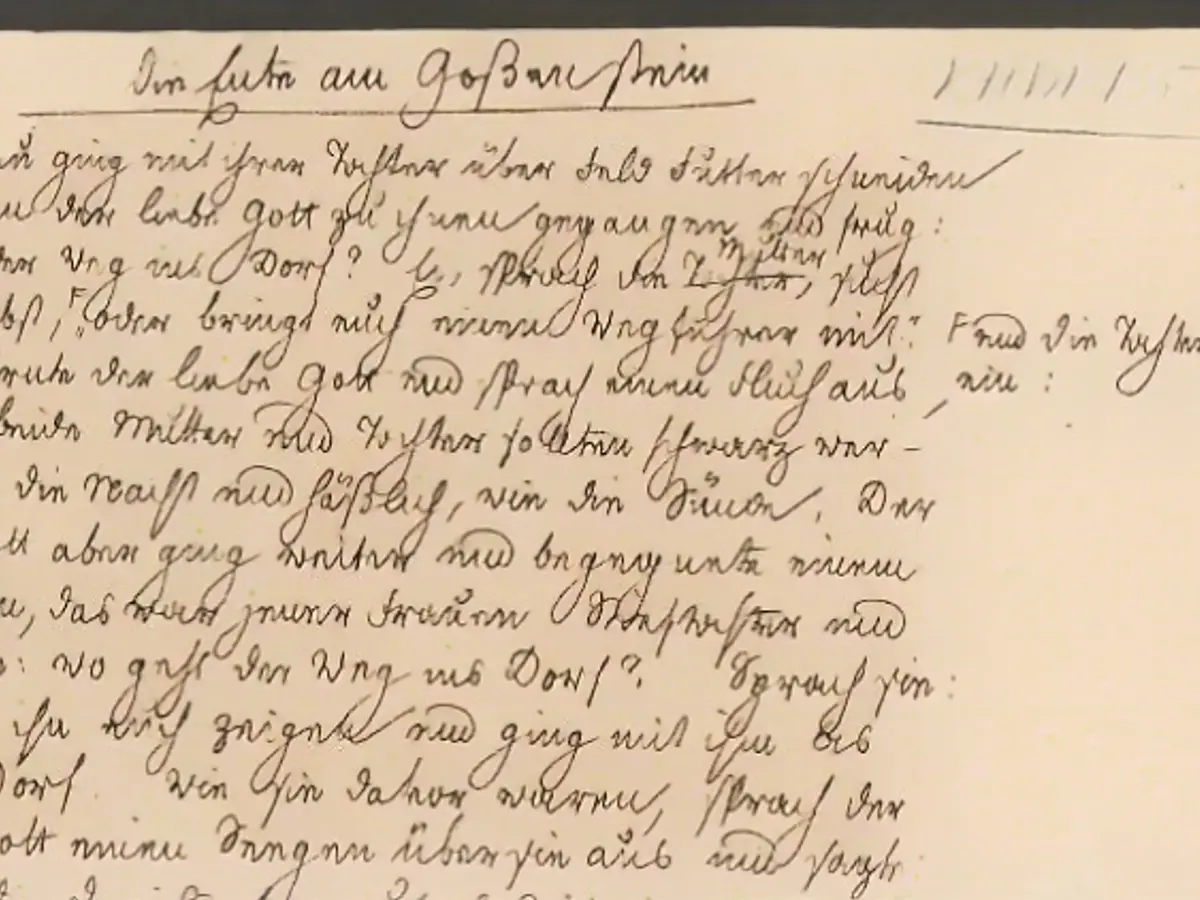Researcher unearths original versions of the Grimm fairy tales
The fairy tales of the Brothers Grimm are world-famous. A fairy tale researcher discovers previously unknown writings by the brothers in their estate. These clarify how much tradition there is in the fairy tales. One of them, which also features a naked woman, is particularly surprising to the expert.
In the Grimm brothers' estate, Professor Holger Ehrhardt from the University of Kassel has found a total of 54 previously unknown manuscripts by the brothers. The German scholar sifted through the brothers' extensive estate, which is located in Berlin. Among the countless unsorted documents that had not yet been scientifically analyzed, Ehrhardt also found manuscripts from so-called contributors, i.e. people who sent the brothers fairy tales and legends.
Ehrhardt also found transcripts of fairy tales that the Grimms had people from the local population tell them and wrote down. Among these was the transcript of the ghost story "The poor farmer in the churchyard" by the probably most famous storyteller Dorothea Viehmann. In this transcript, Jacob Grimm adopted the dialectal expression "Viehmännin", which provides an interesting insight into the North Hessian dialect of the time.
Unconventional double entendres and naked women
The fairy tale expert also attributed the fairy tale "The White and the Black Bride", which was written down by Jacob Grimm, to the storyteller Viehmann on the basis of several pieces of evidence. The researcher proves this with typical Viehmann phrases, such as certain repetitions: "What does she deserve who does this and that?" This repetition "is one of the most striking references to Dorothea Viehmann", says Ehrhardt.
"Such idiosyncratic duplications can only be found in three Viehmann fairy tales and in this manuscript." But the motif of a naked woman is also only found in Dorothea Viehmann. "She had a different relationship to corporeality than the young bourgeois ladies from the Grimm brothers' circle of acquaintances," summarizes the researcher. "So Wilhelm Grimm made a mistake here," says Ehrhardt in the accompanying university podcast. The original version, which bears the title "The Duck on the Goßenstein", was therefore not written by the noble von Haxthausen family, as previously assumed, but by Dorothea Viehmann.
Evidence for traditions
"There is a persistent belief that there were only a few original versions, but that the Grimms invented them to lend authenticity to the stories. This has now been refuted once and for all," Ehrhardt, who was recently awarded the European Fairy Tale Prize, is quoted as saying in the university's press release.
Until now, the so-called Oelenberg manuscripts were considered the only surviving original versions of the Grimm fairy tales. The 46 manuscripts, which were published in the 1920s, will now be supplemented by the newly discovered 54 original versions. In total, Jacob and Wilhelm Grimm wrote down and published more than 200 fairy tales and stories between 1812 and 1858.
Read also:
- This will change in December
- Attacks on ships in the Red Sea: shipping companies avoid important trade route
- German activists speak out in Dubai on suffering in Israel and the Gaza Strip
- Despite UN vote: fighting between Israel and Hamas in the Gaza Strip continues
In the course of his research, Professor Holger Ehrhardt from the University of Cassel discovered a collection of previously unidentified writings by the Brothers Grimm, which shed light on the historical context and traditional elements within their fairy tales. Interestingly, one of these manuscripts, titled "The Duck on the Goßenstein," initially attributed to the von Haxthausen family, was proven through linguistic analysis to have been penned by Dorothea Viehmann, a local storyteller, showcasing her unique linguistic style and perspective on corporeality.
Source: www.ntv.de







